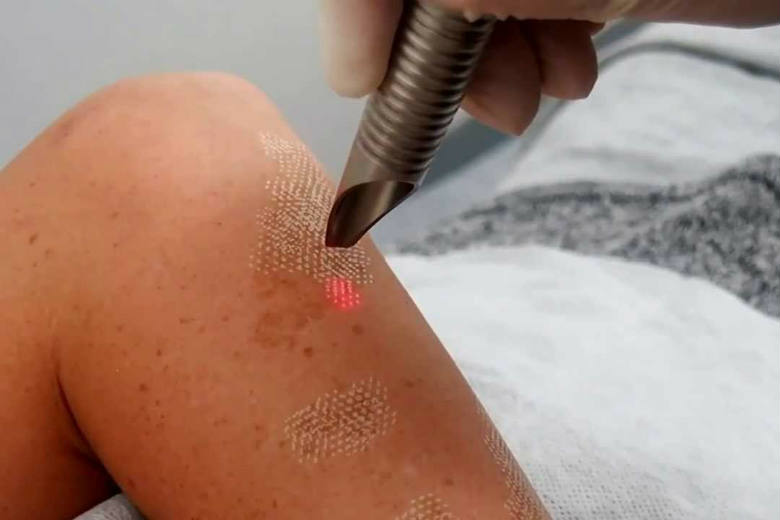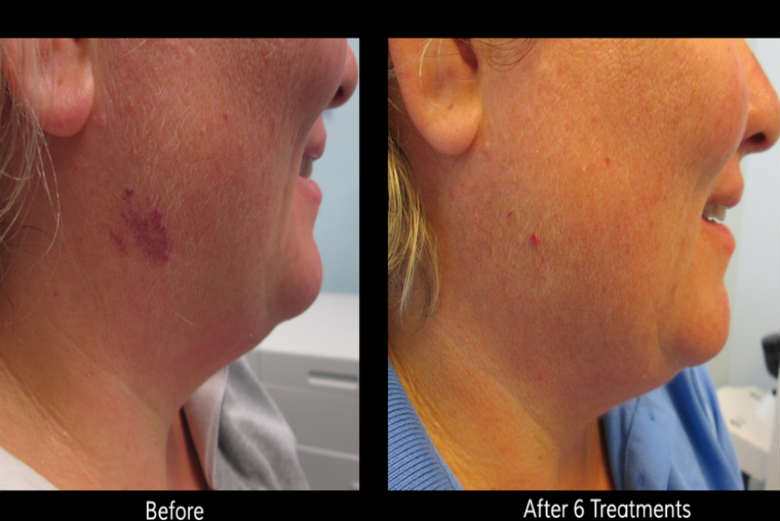Have you ever looked at your birthmark and wondered why it is there? No matter what causes birthmarks and where they are found on the skin, they can sometimes make you look unappealing. A simple birthmark can also create a ‘cobblestone effect’ as you grow into adulthood. Hence, a lot of people opt for birthmark removal these days. Do you also wish to remove your birthmark safely and effectively with minimal side effects? Laser treatment can be the best option for you. Here is a quick guide for lessening or improving the appearance of birthmarks through laser resurfacing.
What Are Birthmarks?
Understanding birthmarks is crucial before delving into laser treatment details. Birthmarks, congenital irregularities present at birth or in early weeks, manifest on any body part, varying widely in size, shape, color, and appearance. These pigmented discolorations or blemishes can be red, pink, purple, or brown marks, spots, or bumps. The causes remain unclear, including defective cell migration, gene mutations, and heredity. While some birthmarks are permanent and may enlarge, others gradually fade with age. Typically benign birthmarks, often removed for aesthetic reasons, don’t necessitate medical treatment.
Also Read – Laser Tattoo Removal – Cost, Risks, And Side Effects
Types Of Birthmarks
Birthmarks can be of the following two categories (1):
1. Pigmented Birthmarks
These are caused by ‘dermal melanosis’ in which clusters of melanin pigment are deposited in a concentrated area in the deeper layers of the skin. These small (around ¼ inch in diameter) marks can be flat or elevated. The most common pigmented birthmarks are Mongolian spots, Cafe-Au-Lait spots, and congenital moles or brown birthmarks.
2. Vascular Birthmarks
These result from a visibly high concentration of blood vessels underneath the skin, which appear flat or raised. Usually, vascular birthmarks are of variable sizes with colors like light pink, red, or dark purple. They can evolve with age and are named Strawberry marks (infantile haemangiomas), Salmon patches / Stork Bite Birthmarks, Port wine stains (capillary malformation birthmarks), etc.
Different Birthmark Removal Methods
Birthmark removal has become common and can be safely done for all body parts. Various approaches can be taken based on the type of marks and the nature of the tissue to be removed. These include:
1. Laser Therapy
Performed by a dermatologist or surgeon, this treatment suits pigmented and vascular birthmarks.
2. Beta-Blockers
These oral medications are most effective in reducing the size or appearance of vascular birthmarks.
3. Corticosteroids
These anti-inflammatory medications are also suitable for vascular birthmarks and can be taken orally or administered through injections.
4. Surgery
Birthmarks can also be removed surgically (scalpel surgery or tissue expansion) if they are about to damage the healthy tissue surrounding them (2).
What Is Laser Birthmark Removal?
Laser birthmark removal is the safest and most effective non-surgical technique used widely for treating pigmented and vascular birthmarks. A fractional laser (a highly concentrated pulsating beam of light) is modulated for strength, which breaks down the pigmentation clusters or the abnormal blood vessels until they fade. Depending on the type and color of lesions to be eliminated or faded away, an ablative or a non-ablative laser is used. Being a highly targeted procedure, it neither affects the surrounding skin of the patient nor leaves any scar.
How Does It Work?
The laser device emits a narrow beam of light having multiple pulses a few millimeters across. This is targeted to the specific skin area that needs to be treated. For pigmented birthmarks, the built-up pigment cells are broken up into tiny fragments by the light energy and disposed of through the body’s immune system naturally. The troubled blood vessels are heated up and collapsed for vascular birthmarks by the light energy. This stops the blood flowing into that area, and the blood vessels eventually get absorbed into the skin.
Also Read – Get A More Well-Contoured Body With The Aid Of Accent Laser Treatment
Is It Safe?
Laser treatment is considered the safest and the most advanced method for birthmark removal as the selectively targeted light energy does not cause any lasting damage to the skin. It can also eliminate unwanted birthmarks from delicate and sensitive body parts.
Ideal Candidates
Anybody with good overall health and undesirable birthmarks can opt for this treatment. However, she is not prone to keloid scarring.
How To Prepare
If you are about to undergo the laser birthmark removal treatment, stop smoking at least four weeks before it. Make sure that you avoid too much sun exposure and blood thinning medications. Also, moisturize specific areas of the skin regularly and take antiviral drugs as prescribed by the physician.
The Procedure
- It is usually a ‘tolerable’ procedure with a flicking or stinging sensation against the skin. However, your physician can use a topical numbing cream if required.
- Then, a high-intensity light of a targeted wavelength is applied to the skin of the treatment area with the help of a hand-held flashgun.
- Finally, sun protection is applied to the treated skin to shield it from the sun’s harsh rays.
Time And Sessions
Laser birthmark removal is a concise procedure that takes only 15 to 20 minutes. Based on your individual treatment needs, you may need to undergo a series of 4-6 sessions, carried out 6-8 weeks apart, to fade the marks fully.
Read Also – Active FX Treatment – Laser Skin Resurfacing Procedure, Costs, Recovery, Side Effects
Post-Procedural Care
Your skin will be sensitive and sore immediately after the treatment. But these are temporary and will go away after 24 hours. It is expected to experience mild swelling, redness, and bruising in the area(s) of treatment, which also subside automatically within a couple of days. If you get an ablative laser treatment, your skin will peel and crust for 3-4 weeks until the mark disappears completely. Keep it moisturized to reduce flakiness. Ensure you stay away from the direct sunlight for the first few weeks after the treatment. Wearing protective clothing, accessories, and sunscreen with SPF 40 or more is recommended for a few months.
Recovery And Downtime
Based on the type of laser used for your birthmark removal, the recovery time can range from 1 to 3 days.
Risks And Complications
No severe side effects are associated with laser resurfacing for birthmark removal. Though scarring may occur, it is pretty rare.
Duration Of Effects
It is a highly effective procedure with permanent results.
Costs Involved
You may need to shell out $1,000 – $3,000 for removing birthmarks through laser treatment.
Summary
Birthmarks, congenital irregularities appearing at birth or in early weeks, often lead individuals to seek removal for aesthetic reasons. Birthmarks can be pigmented or vascular, varying in size, shape, and color. Laser birthmark removal is a non-surgical and advanced method employing a fractional laser to target pigmented clusters or abnormal blood vessels. This highly targeted approach, involving a pulsating light beam, effectively breaks down pigmentation or collapses blood vessels without affecting surrounding skin, leaving no scars. Laser birthmark removal, considered safe and efficient, is suitable for pigmented and vascular birthmarks. The procedure, lasting 15 to 20 minutes, may require 4-6 sessions spaced 6-8 weeks apart for optimal results. Temporary side effects include sensitivity, soreness, mild swelling, redness, and bruising. Post-procedural care involves moisturization, sun protection, and avoiding direct sunlight. The recovery time ranges from 1 to 3 days, with rare instances of scarring. Laser birthmark removal provides permanent results, costing $1,000 – $3,000.
Read Also – Laser Bra Breast Surgery To Lift Your Breasts
References:
- “Birthmark“, MedicineNet.com
- “Everything You Need to Know About Birthmarks,” Healthline.com



